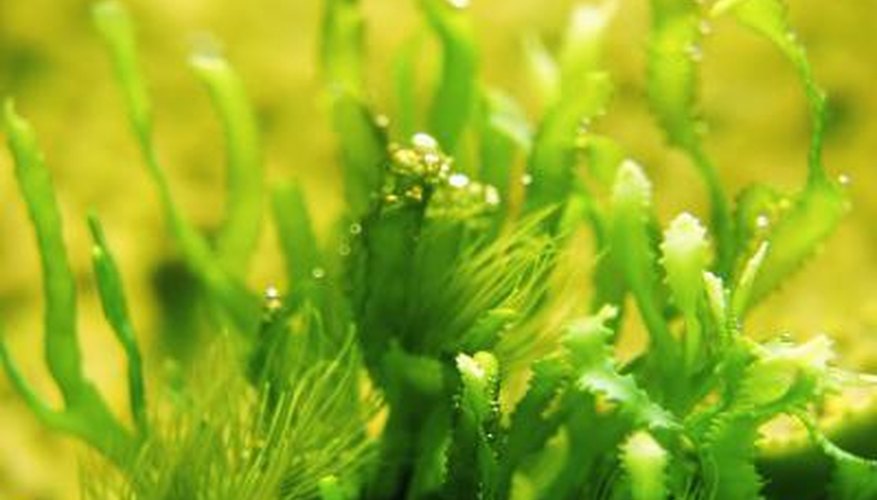Aquatic algae is one of the simplest plant organisms on our planet. If life evolved from bacteria to plants, from sea creatures to land creatures, algae is likely one of the primal stepping stones in the evolutionary process. Aquatic algae demonstrates properties which are found in animal life and plant life, including the ability to adapt to its surroundings.
Interaction with Competition
Like chameleon lizards that change colour to blend in with their surroundings, individual algae strains have demonstrated the ability to uniquely adapt to individual environments in order to blend in with, or overcome the challenges of, their environment. In a coral reef setting, algae becomes highly regenerative.
Reproductive Adaptation
Asexual reproduction enables a plant or animal species to reproduce on its own and survive in a highly competitive surroundings. Sexual reproduction requires a male and a female of the species to provide the necessary elements of a complete regeneration phase. For example, mammals require a female egg to be fertilised by a male sperm to create a new life. Aquatic algae has adapted the ability to reproduce asexually and sexually. Asexual reproduction is accomplished through fragmentation. The plant drops spores which can plant themselves and grow. Sexual reproduction occurs when gametes from two species meet to form a spore called a syngamy, which then produces and releases algae seeds, mature cells that can plant themselves, grow or reproduce.
- Asexual reproduction enables a plant or animal species to reproduce on its own and survive in a highly competitive surroundings.
Environmental Adaptation
Aquatic algae demonstrates photosensitive and cosmetic adaptation throughout the ocean. If algae originated from a single strain, environmental evolutions have forced the adaptation into red, brown, yellow and green colour algae which each blend in with their environmental surroundings. This adaptation helps algae avoid being completely consumed by the local fish species.
Internal Chemical Adaptation
In a research experiment conducted in the San Francisco Bay area, multiple samples of several algae species were taken from polluted and non-polluted waters. Tests demonstrated that the algae residing in polluted waters had internally adapted, and produced chemical variances as part of the adaptation process. These plants physically and chemically changed their composition in order to adapt to the pollutants in the water.
